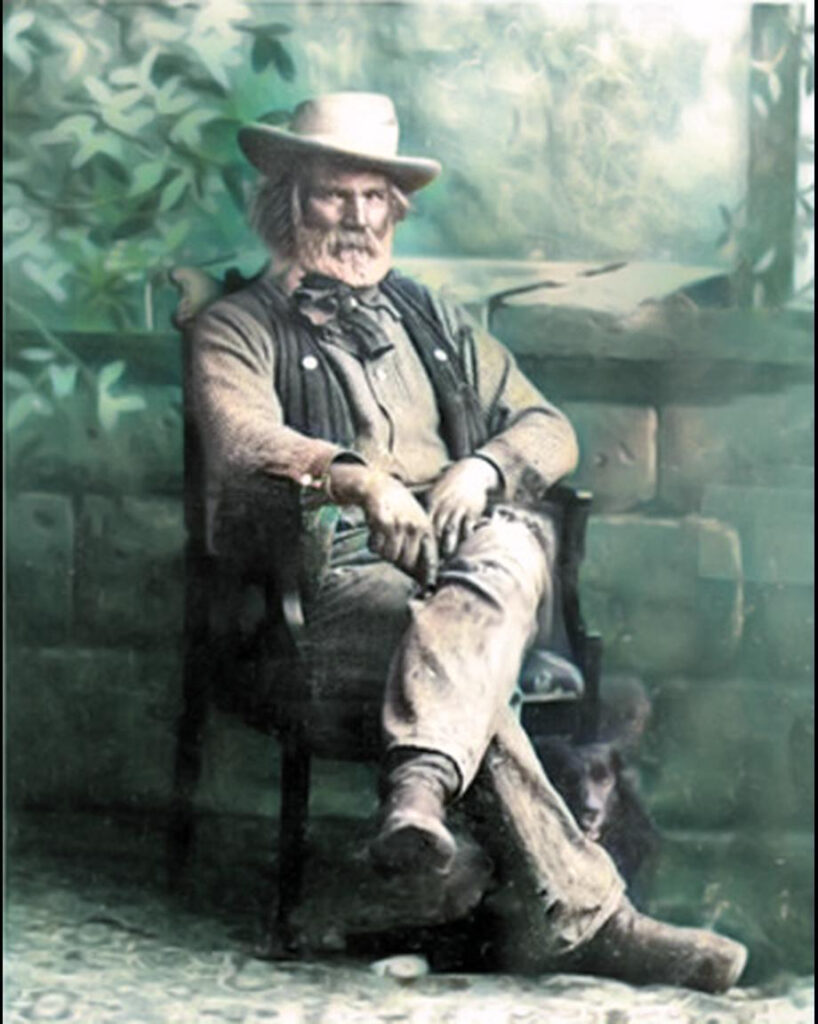Andrew Jackson “Jack” Longstreet (circa 1834–1928) earned renown as “the Last of the Desert Frontiersmen” — a man of fierce independence and rugged frontier grit, whose life still echoes across Nevada’s wild backcountry.

Jack Longstreet was one of those desert characters who seemed pulled straight from a dime novel, only he was real — and larger than life. Born around 1834, probably in Tennessee, he carried a shadowy past that folks whispered about. Some said he’d been mixed up in rustling back east, and when his gang was caught, the others swung from a rope while Longstreet got off with the loss of an ear. He grew his hair long to hide it, and the scar just added to the air of danger around him.
By the 1880s, he had drifted into Nevada, a land of raw opportunity and rough justice. He was everything the frontier demanded: a prospector, gambler, rancher, stagecoach shotgun rider, saloonkeeper, and, by some accounts, even a Pony Express rider. He married a Southern Paiute woman named Fannie, learned her language, and earned a reputation as a man who stood up for Native rights. He could be tough, but he was fair — a quality that made him respected by some and feared by others.
In 1895, Longstreet built a stone cabin beside a spring in the lonely Ash Meadows of the Amargosa Valley. The place was remote enough to suit him, with water for his livestock and a wide view of anyone coming his way. That cabin, now restored in the Ash Meadows National Wildlife Refuge, still stands as a quiet witness to his life on the edge of civilization.

He later moved north into the Monitor Range, setting up the Red Rock Ranch near Belmont. His final years were quieter, but not without drama. In 1928, an accidental gunshot led to a stroke that ended his life at the age of about 94. He was buried in Belmont Cemetery, with Fannie joining him four years later.
Longstreet lived by his own rules in a Nevada that was still wild. His life was part outlaw tale, part survival story — the kind of man who could gamble in a saloon one night, dig a waterhole the next, and disappear into the hills without a trace. Even today, his name carries the weight of desert legend.
Timeline
1834 – Born, likely in Tennessee.
Mid-1800s – Rumored involvement in rustling; loses an ear as punishment.
1880 – Arrives in Nevada Territory; works as prospector, gambler, rancher, saloonkeeper, stagecoach shotgun rider.
1882 – Operates a saloon and drug store in Sylvania, Nevada.
Late 1880s – Homesteads near Moapa Indian Reservation; involved in a fatal shooting, later acquitted as self-defense.
1890s – Marries Southern Paiute woman, Fannie; becomes known for supporting Native rights.
1895 – Builds stone cabin at Ash Meadows, Amargosa Valley; ranches and develops spring site.
Early 1900s – Leaves Ash Meadows for Monitor Range; establishes Red Rock Ranch near Belmont.
1928 – Accidentally shoots himself; suffers stroke and dies in Tonopah at about 94 years old.
1932 – Fannie Longstreet dies; buried beside Jack in Belmont Cemetery.